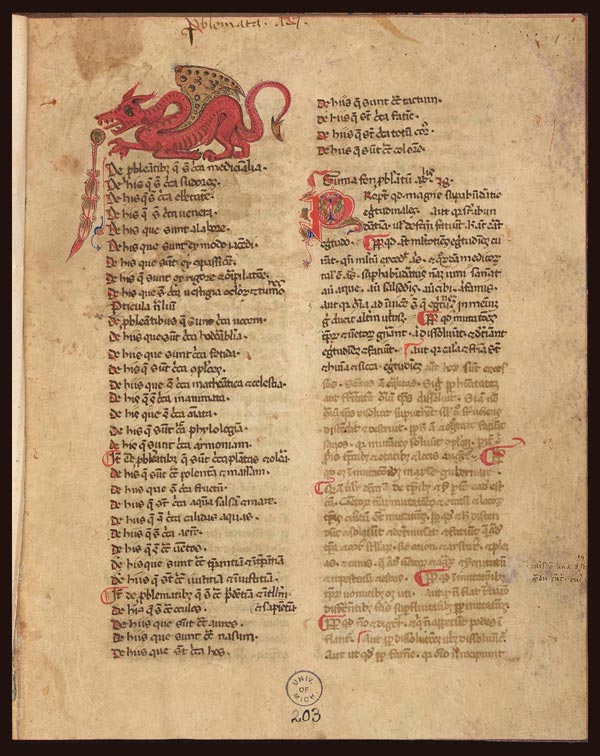This fourteenth-century manuscript contains the Latin translation by Bartholomew of Messina (fl. 1258–1266) of the first book of the Pseudo-Aristotelian Problemata, which deals with medical matters. The striking illumination depicting a dragon is likely a playful reference to the so-called “dragon’s blood,” a red resin, which, since antiquity, was thought to have multiple uses, including medical properties to cure respiratory and gastrointestinal ailments.
The book is structured in a question-and-answer format, as is true of the rest of this work. For instance, after the table of contents, we encounter a series of questions:
Why is it that great excesses cause disease? Is it because they engender excess or defect, and it is in these after all that disease consists?


